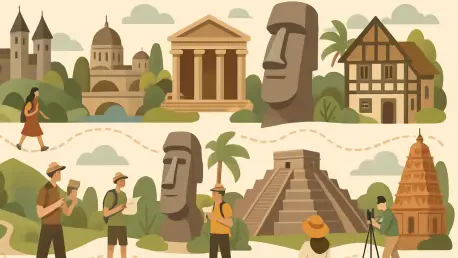Imagine a world where ancient pathways, once traveled by merchants and explorers, now serve as bridges connecting modern societies through shared history and cultural exchange, while also preserving the rich stories of past civilizations. These historic routes, steeped in the narratives of bygone eras, are emerging as powerful tools for sustainable tourism, drawing global attention to their potential for fostering economic growth and cultural understanding. A recent international gathering in Sofia, Bulgaria, brought together experts and stakeholders to discuss how such routes can transform tourism into a force for good. Hosted jointly by the Ministry of Tourism of the Republic of Bulgaria and the United Nations World Tourism Organization (UNWTO), this event underscored the profound impact of cultural heritage on shaping collective memory and identity. By focusing on destinations rich in archaeological wonders, ancient architecture, and vibrant folklore, the congress highlighted the unique role these historic corridors play in promoting dialogue and sustainable development across communities worldwide.
Harnessing Historic Pathways for Tourism Growth
The discussions in Sofia placed significant emphasis on the transformative potential of cultural heritage routes in elevating the appeal and competitiveness of tourism destinations. These pathways, which link diverse histories and traditions, offer more than just scenic journeys; they act as conduits for sustainable growth and mutual understanding among different regions. By weaving together tangible landmarks and intangible cultural elements, such routes encourage preservation efforts while stimulating economic and social progress. The event shed light on how tourism, when thoughtfully managed, can safeguard heritage assets and contribute to global sustainability goals. A key takeaway was the recognition that these historic corridors can inspire peace and prosperity by fostering dialogue among peoples, turning destinations into vibrant hubs of cultural exchange. This approach not only attracts travelers seeking authentic experiences but also ensures that local communities benefit from the influx of tourism in a balanced and responsible manner.
Innovative Initiatives and Future Directions
One of the most compelling examples shared during the congress was the UNWTO’s Western Silk Road initiative, a project developed in collaboration with the European Union. Focused on the western segment of the legendary Silk Road, spanning European Union member states and partner countries around the Mediterranean, Caspian, and Black Seas, this effort aims to diversify tourism offerings through heritage-based strategies. By integrating product development and capacity-building, the initiative seeks to create sustainable tourism models that highlight the unifying theme of Silk Road heritage, drawing visitors while strengthening cultural ties. Beyond specific projects, the congress also produced a detailed set of recommendations for stakeholders to maximize the potential of cultural routes. These guidelines emphasized the importance of collaboration among governments, organizations, and local communities to protect cultural assets while ensuring tourism aligns with sustainable practices. The event concluded with a shared vision for leveraging these routes to build inclusive and competitive destinations for the future.









